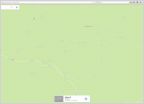-
Welcome to Tacoma World!
You are currently viewing as a guest! To get full-access, you need to register for a FREE account.
As a registered member, you’ll be able to:- Participate in all Tacoma discussion topics
- Communicate privately with other Tacoma owners from around the world
- Post your own photos in our Members Gallery
- Access all special features of the site
Baja and the Mystery of Melchior Diaz, from 1541
Discussion in 'Trip Reports' started by David K, Apr 28, 2015.


 Big Bend 2014
Big Bend 2014 Mojave trail run - March 18th, 2018
Mojave trail run - March 18th, 2018 Titus Canyon - Death Valley, CA - 1/1/2016
Titus Canyon - Death Valley, CA - 1/1/2016 Colorado passes trip plan needed
Colorado passes trip plan needed Took a Trip (San Diego to Banff)
Took a Trip (San Diego to Banff) The Mojave Road, Central
The Mojave Road, Central
































